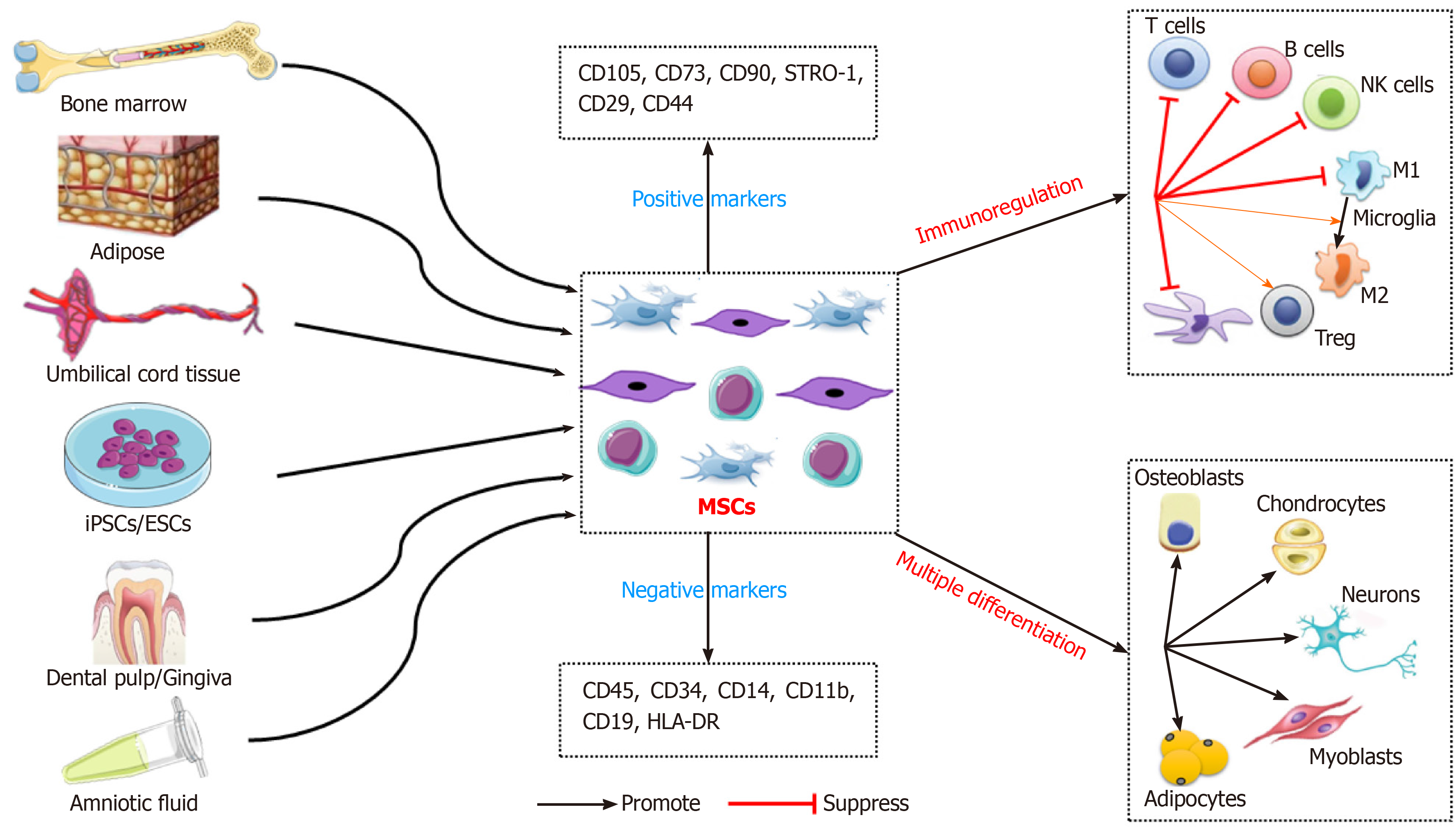Copyright
©The Author(s) 2020.
World J Stem Cells. Aug 26, 2020; 12(8): 814-840
Published online Aug 26, 2020. doi: 10.4252/wjsc.v12.i8.814
Published online Aug 26, 2020. doi: 10.4252/wjsc.v12.i8.814
Figure 1 Schematic diagram of mesenchymal stem cells-based regenerative medicine.
Mesenchymal stem cells can be easily isolated from a variety of tissues, and the multiple differentiation and immunomodulatory properties of mesenchymal stem cells make them ideal candidates for cell therapy. ESCs: Embryonic stem cells; iPSCs: Induced pluripotent stem cells; CD: Cluster of differentiation; MSCs: Mesenchymal stem cells; DC: Dendritic cells; NK cells: Natural killer cells; M1: Microglia M1 phenotype; M2: Microglia M2 phenotype; Treg: Regulatory cell.
Figure 2 Exosome biogenesis and its application.
A: Exosome biogenesis and intercellular communication; B: Exosome components; C: Exosome application. The applications include: (1) Drug deliver. Therapeutic agents such as chemicals, peptides, and RNAs can be delivered into patients; (2) diagnosis: Exosomes derived from patients can be used for disease diagnosis; and (3) therapy: Exosomes derived from mesenchymal stem cells can be used for various diseases. MVB: Multivesicular body; ILV: Intraluminal vesicle; MCH 1, 2: Major histocompatibility complex 1, 2; TSG101: Tumor susceptibility gene 101; ALIX: ALG-2-Interacting Protein X; RAP1B: Member of RAS oncogene family.
Figure 3 Main functions of mesenchymal stem cell-derived exosomes.
MSCs: Mesenchymal stem cells.
Figure 4 Therapeutic effects of mesenchymal stem cell-derived exosomes in kidney, liver, cardiovascular, neurological, and musculoskeletal diseases, as well as cutaneous wound healing.
MSCs: Mesenchymal stem cells.
- Citation: Ma ZJ, Yang JJ, Lu YB, Liu ZY, Wang XX. Mesenchymal stem cell-derived exosomes: Toward cell-free therapeutic strategies in regenerative medicine. World J Stem Cells 2020; 12(8): 814-840
- URL: https://www.wjgnet.com/1948-0210/full/v12/i8/814.htm
- DOI: https://dx.doi.org/10.4252/wjsc.v12.i8.814












